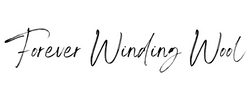How to do knitting for beginners step by step?
Posted by Kelly Holtsclaw on Mar 9th 2023
If you're new to knitting, learning the knit and purl stitches is your essential first step. These two simple techniques form the foundation for countless textures and patterns found in handspun, hand-dyed, and commercial wool yarns. This guide will walk you through the basics, stitch patterns, and terminology you'll encounter as a beginner.
Understanding the Knit and Purl Stitches
Knit Stitch ("K" in patterns):
The knit stitch is the backbone of knitting, producing a smooth, "V"-shaped fabric on the front (right side). It's worked by inserting your right needle into the front of the stitch on your left needle, wrapping the yarn around, pulling a loop through, and sliding the old stitch off.
Purl Stitch ("P" in patterns):
The purl stitch creates a bumpy ridge that contrasts with the knit side. To purl, insert your right needle into the front of the stitch from right to left, wrap the yarn in front, pull through, and slide the stitch off.
Stitch Patterns for Beginners
Garter Stitch:
- How to: Knit every row
- Result: Dense, textured fabric that looks the same on both sides and doesn’t curl at the edges—perfect for scarves and beginner projects.
- Tip: Each ridge you see is made from two knit rows.
Stockinette Stitch:
- How to: Alternate knit rows (right side) and purl rows (wrong side)
- Result: One side is smooth and flat ("knit" side); the other is bumpy ("purl" side). Note that this fabric will curl at the edges, so it's commonly used for panels and pieces that will be seamed or finished with a border.
Common Knitting Terms
- Right Side (RS): The side meant to be seen when your project is done (usually the knitted "V" side).
- Wrong Side (WS): The back of your work, often with bumps. Marking this side can help you follow patterns accurately.
- Decrease: Combining two or more stitches into one to shape your fabric.
- Increase: Making more stitches from a single one, often used to widen your work.
- Yarnover (YO): Looping the yarn over the needle to create an extra stitch—used for decorative holes or shaping.
Four Basic Steps for Every Stitch
- Insert the right needle into the next stitch on the left needle.
- Wrap the yarn around the right needle.
- Pull the yarn through to make a new loop.
- Slide the old stitch off the left needle.
Repeat these steps—and you’re knitting!
Quick Reference Table
| Stitch | How to Work | Main Feature | Typical Use |
|---|---|---|---|
| Knit | Knit every row or as the pattern states | Smooth "V" front | Garter, stockinette |
| Purl | Purl every row or as the pattern states | Bumpy back, textured fabric | Ribbing, patterns |
| Garter | Knit every row | Looks the same on both sides, sturdy | Scarves, edges |
| Stockinette | Alternate knit and purl rows | Smooth front, bumpy back | Garments, panels |
Mastering knit and purl stitches opens up a world of creative possibilities. Use them alone or combine them for patterns and texture with your favorite handspun or commercial yarns. For extra support, consider asking an experienced knitter to demonstrate the motions or check out a video tutorial online.

